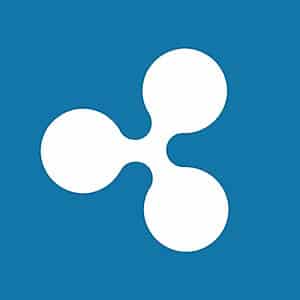- Ripple and its executives opposed the SEC’s motion to file an appeal in the lawsuit.
- Ripple argues that there is no legal rule to back the SEC’s contention that the court reached the wrong result in applying the Howey Test to XRP.
- SEC vs. Ripple lawsuit cannot be terminated by appeal as payment giant says that ruling on XRP’s institutional sales still pending.
The SEC filed a motion for an interlocutory appeal against Judge Torres’ ruling, citing the impact on the regulator’s other lawsuits.
Ripple filed a motion asking the court to deny the SEC’s request to file an interlocutory appeal. The payment giant explains that the SEC required the Howey Test to be applied to the Ripple lawsuit since the beginning of the legal battle, once its application resulted in an outcome that affects the SEC’s other lawsuits, the regulator decided to file an appeal. There is no legal rule, according to the motion, to support the SEC’s application for an appeal at this point in the case, ahead of the final ruling in the lawsuit.
According to XRPL Layer 2 project builder and former lawyer Scott Chamberlain, the SEC “won on the law front and lost on the case facts.” Ripple and its executives argue that this does not justify an appeal ahead of a final verdict in the SEC vs Ripple lawsuit.
Ripple opposes SEC motion to appeal XRP ruling
Ripple, a cross-border payment remittance firm, filed a motion to oppose the financial regulator’s application to appeal the XRP ruling. Since the beginning of the SEC’s lawsuit against Ripple, the regulator insisted that the court apply the Howey Test to facts and determine whether XRP is an investment contract.
Upon successful application of the Howey Test, Judge Analisa Torres determined that XRP in itself is not a security. The ruling handed Ripple a partial win against the SEC, and this outcome has influenced the regulator’s lawsuits against Coinbase and other cryptocurrency firms and projects. The SEC has applied to file an interlocutory appeal, asking the court to revisit the ruling and application of the Howey Test.
In short, the SEC won on the law and lost on the facts. They shouldn’t be allowed to appeal the law they won on so it can be adjusted to the facts they lost on. That will just raise new legal issues, lead to further appeal points, and complicate everything. They should wait until… https://t.co/BMM0psLs9d
— Scott Chamberlain | ☠️ (@scotty2ten) August 16, 2023
In its filing, Ripple states that there is no legal rule backing the SEC’s request to file an interlocutory appeal. Further, the final verdict in the SEC vs. Ripple lawsuit could influence the outcome of the appeal.
At the time of writing, XRP price is $0.5892 on Binance, recovering from the weekly low of $0.5717.
Cryptocurrency metrics FAQs
The developer or creator of each cryptocurrency decides on the total number of tokens that can be minted or issued. Only a certain number of these assets can be minted by mining, staking or other mechanisms. This is defined by the algorithm of the underlying blockchain technology. Since its inception, a total of 19,445,656 BTCs have been mined, which is the circulating supply of Bitcoin. On the other hand, circulating supply can also be decreased via actions such as burning tokens, or mistakenly sending assets to addresses of other incompatible blockchains.
Market capitalization is the result of multiplying the circulating supply of a certain asset by the asset’s current market value. For Bitcoin, the market capitalization at the beginning of August 2023 is above $570 billion, which is the result of the more than 19 million BTC in circulation multiplied by the Bitcoin price around $29,600.
Trading volume refers to the total number of tokens for a specific asset that has been transacted or exchanged between buyers and sellers within set trading hours, for example, 24 hours. It is used to gauge market sentiment, this metric combines all volumes on centralized exchanges and decentralized exchanges. Increasing trading volume often denotes the demand for a certain asset as more people are buying and selling the cryptocurrency.
Funding rates are a concept designed to encourage traders to take positions and ensure perpetual contract prices match spot markets. It defines a mechanism by exchanges to ensure that future prices and index prices periodic payments regularly converge. When the funding rate is positive, the price of the perpetual contract is higher than the mark price. This means traders who are bullish and have opened long positions pay traders who are in short positions. On the other hand, a negative funding rate means perpetual prices are below the mark price, and hence traders with short positions pay traders who have opened long positions.
Like this article? Help us with some feedback by answering this survey:










